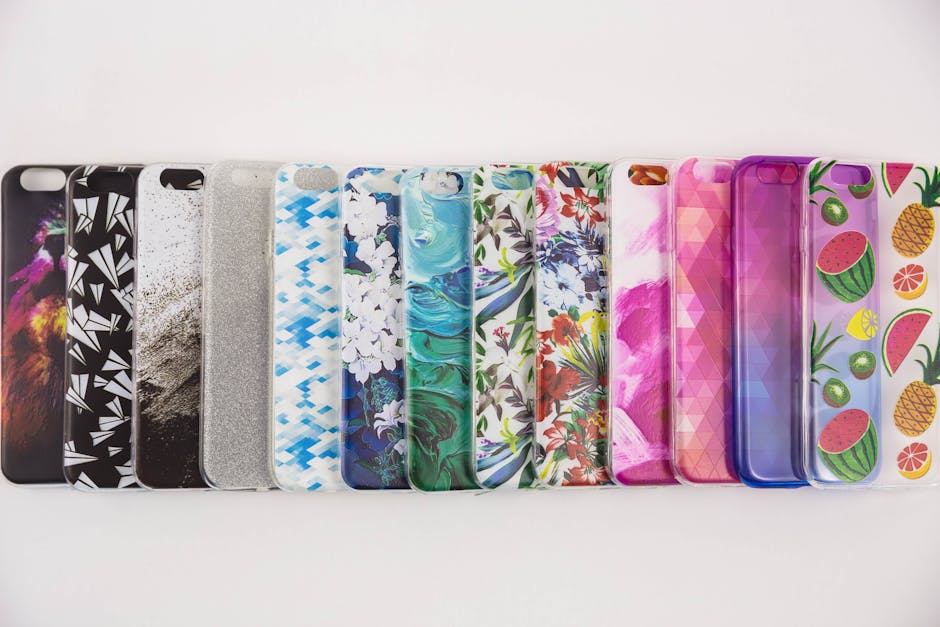Tech Tactility: Discover the Future of Haptic Feedback Devices!
In today’s fast-paced tech landscape, haptic feedback is moving beyond the gaming realm to add a new dimension to our interactions with devices. Whether you’re texting a friend or navigating an augmented reality landscape, these tactile sensations connect us to our technology in innovative ways. Imagine feeling the texture of digital surfaces or sensing the weight of a virtual button being pressed. Intrigued? You should be! In this article, we dive deep into the next generation of haptic feedback devices, exploring their implications, evolution, and how they influence our daily lives.
A New Dimension of Interaction

The term "haptic" comes from the Greek word “haptikos,” which means "able to touch or perceive." Traditionally, haptic technology has primarily been associated with gaming—think of a controller vibrating with every explosion in your favorite first-person shooter. However, this technology isn’t just about enhancing a gaming experience; it is poised to revolutionize our daily interactions with devices.
Imagine receiving a notification on your smartwatch that doesn’t just vibrate but simulates the feeling of a gentle tap, mimicking a real-life interaction. Or consider smartphones equipped with screens that simulate textures, allowing you to experience a chiseled granite surface or soft velvet fabric at your fingertips. This unique combination of technology and human touch is creating a realm where digital interactions feel more like physical ones.
The Evolution of Haptic Technology

Haptic feedback has come a long way since the early days of vibration motors. The early implementations were simple: devices would buzz to signal incoming calls or alerts. As technology progressed, so did the complexity of haptic systems.
Modern devices now utilize advanced actuators that can replicate textures and sensations with incredible accuracy. For instance, piezoelectric actuators uplift the user experience by enabling a range of sensations from light taps to stronger vibrations. As we move towards 2025, companies are investing heavily in this technology to enhance user experiences across several industries.
Additionally, the growth of AR and VR technologies necessitates a more nuanced and sophisticated level of haptic feedback. As we discussed in our article on AI-powered sensory gadgets, the next step is to synchronize touch sensations with visual ones, creating truly immersive environments.
Haptic Feedback Beyond Gaming

So where else are we seeing the impact of haptic technology? Let’s take a look at various sectors where haptic feedback is making significant strides.
1. Healthcare

In healthcare, haptic feedback devices are proving invaluable. For instance, they are utilized in surgical simulators, aiding medical professionals in honing their skills before performing actual procedures. Surgeons can practice with devices that mimic the feel of real tissues, enhancing their dexterity and precision. Moreover, these devices can be used in rehabilitation, providing patients with tactile feedback as they perform physical therapy exercises.
2. Education

In educational environments, particularly in STEM fields, haptic technology offers a unique tactile element to learning. Imagine students manipulating virtual models of human anatomy or conducting chemistry experiments that provide real-time feedback through touch. Haptic devices can make abstract concepts more tangible, thereby enhancing the learning process.
3. Industrial Applications

In industries such as manufacturing or engineering, workers can use haptic feedback tools to interact with complex machinery. Haptic technology can guide them through processes with physical cues, making operations safer and more efficient. From real-time feedback in assembly lines to virtual prototyping with tactile sensations, the possibilities are nearly limitless.
How Haptic Feedback Enhances User Experience

One of the most exciting aspects of haptic feedback technology lies in its ability to enhance user experience significantly. The senses of touch and feel play a crucial role in how we understand and interact with our world. Haptic feedback reinforces our physical connection to devices, allowing for a richer and more immersive experience.
The Psychology of Touch

Research suggests that incorporating haptic feedback into user interfaces can lead to improved engagement and retention. The sensation of touch can generate emotional responses that deepen our interactions. This can be particularly relevant in marketing campaigns where brands leverage touch to forge stronger connections with their customers.
Moreover, the subtlety of haptic sensations can aid in mitigating frustration. For example, when a user inputs the wrong command, a gentle vibration can signal an error without taking them out of the interaction. This concept of “gentle nudges” plays a significant role in user retention and satisfaction.
Leading Innovations in Haptic Technology

As the tech landscape evolves, numerous startups and established companies are innovating in the haptic field, each offering unique solutions. Here are some exciting examples painting the future of tactile technology.
1. Ultraleap

Ultraleap combines hand tracking with haptic feedback, creating a touchless experience that allows users to interact with virtual objects through mid-air gestures. Their technology promises to provide business opportunities in diverse sectors ranging from advertising to entertainment.
2. HaptX

HaptX is famous for its haptic gloves, which provide realistic feedback as users interact with virtual objects in VR environments. These gloves are integral for training simulations in fields such as medicine and engineering, where real-life practice is crucial.
3. Lora DiCarlo

The wellness and adult health company Lora DiCarlo emphasizes the emotional connection and wellbeing aspects of haptic feedback. Their responsive devices create sensations that enhance intimate experiences, demonstrating how haptic feedback transcends conventional applications.
The Challenges of Haptic Technology

While haptic feedback poses exciting opportunities, it isn’t without challenges. One significant barrier is the standardization of technologies across devices. As businesses rush to innovate, the lack of universal standards can lead to fragmented customer experiences. Consumers might find themselves surrounded by various haptic technologies that do not communicate with one another, ultimately hindering usability.
Additionally, there are issues concerning the affordability of advanced haptic devices. Higher-end implementations, such as that from gloves and full-body suits, can be prohibitively expensive, limiting access to everyday consumers. Balancing cost and functionality will be vital for the widespread adoption of haptic technology.
The Future of Tech-Tactility
As we step into 2025, the scope of haptic feedback devices is set to expand. With advancements in AI and machine learning, expect intelligent haptic responses that adapt to individual users. Imagine a wearable device that learns your preferences and modifies feedback accordingly. The fusion of haptic technology with AI can create tailored experiences that resonate deeply with users.
Moreover, as smart homes gain popularity, we might see haptic feedback in home automation. Imagine which lights turn on with a gentle tap or the ability to control kitchen appliances through tactile interactions. Not only does this create a more seamless experience, but it also adds layers of enjoyable interaction for users in their daily lives.
Finally, with the rise of wearable technology and augmented reality, the possibilities are limitless. Devices in the health and wellness arenas, entertainment, and even personal relationships are set to experience the revolution of tactile sensations.
Final Thoughts
The future of haptic feedback is undeniably exciting. As we have explored, this technology is set to transform not just gaming but also education, healthcare, and our everyday interactions with technology. The way we connect with our devices today will evolve to become richer and more intuitive, offering users a sensory experience that solidifies their relationship with technology.
As we prepare for a future where haptic feedback is seamlessly integrated into various spheres of life, expect to see innovations that challenge ordinary perceptions of touch, feel, and interaction. Stay tuned as this vibrant field progresses further into 2025 and beyond.
If you want to read more about how technology continues to evolve to affect our everyday lives check out our article on emotionally intelligent devices and the smartest home devices to watch this year for further insights.



